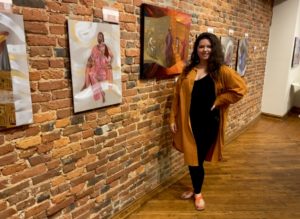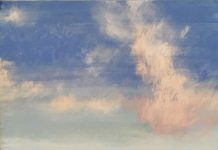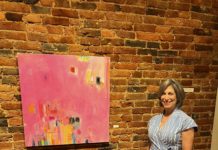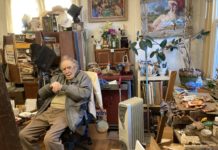
Where were you when you first watched Dreamworks’ 1998 film “The Prince of Egypt’’?
If you’re a millennial, the answer to that question is vivid in your mind. For example, Sasha Zeiger, a 27-year-old artist from Voorhees, New Jersey, was in her sixth-grade Hebrew school classroom at Congregation Beth El.
“I remember specifically the angel of death scene just really captivated me because — obviously when you go to Hebrew school, you talk about God all the time — I wasn’t able to have an image of God,” Zeiger said. “And then for some religions, it’s very sacrilegious to even try to display God visually or give him a voice, so I just remember being so struck by that; I’m actually terrified of it.”
Zeiger is referring to a scene in the film where the mysterious aura of the angel of death sweeps through Egypt, first through the streets of Jewish homes — deterred from entering by the lamb’s blood on the homes’ doorposts — and then through Egyptians’ homes, where families awaken to find the fallen silhouettes of their first-born sons.
The haunting scene had a profound impact on Zeiger. Beyond helping her visualize the stories of her ancestors and of God, “The Prince of Egypt” laid the groundwork for how Zeiger understood history, art, philosophy and religion.
The film is also the inspiration for “The Surrender Collection,” an exhibit exploring the themes of brotherhood, fate and duty in the film and the story of Exodus, now on display at the Old City Jewish Arts Center.
“The Surrender Collection” puts seven acrylic paintings of the story’s protagonists in conversation with one another. In the center, Moses is torn between his loyalty to Pharaoh Ramses II and his Jewish brethren, from whom he was estranged at a young age. The motif of the angel of death is woven into all seven paintings.
A QR code beside the paintings can be scanned, providing supplementary contextual information about each piece.
Throughout Zeiger’s art career, she’s been interested in the two sides of a painting: the meaning that can be ascertained from just looking at a piece and the artist’s meaning behind it.
“I approached the paintings as if I’m telling a story,” Zeiger said. “I really feel like you can read a painting if you just learn the language of it.”
The name of Zeiger’s art brand and business, Surface By Sasha, plays on the idea. What is the thought that goes beyond the surface-level images of a painting?
The introspective nature of Zeiger’s painting style reflects her background in philosophy. A graduate of American University with both a bachelor’s and master’s in philosophy (as well as a bachelor’s in business management), Zeiger has long been interested in the world’s “expansive” workings.
“Philosophy is just a holistic approach to learning,” she said. “What I love the most about it, that I’m constantly reminding myself, is that philosophy literally means ‘love of wisdom’. It’s not ‘love of knowledge’. So you don’t need a teacher; you don’t need a classroom.”
Zeiger, when she’s not painting, pursues her “love of wisdom” in writing. In January, she self-published her first novel “The Tower of Theo,” about a world in which art comes to life but is forbidden from being destroyed. A fan of existentialist and ancient philosophy, Zeiger structured her novel after a Greek tragedy.
“The past comes back to haunt these artists, and there’s a code of ethics: how to create art, how to be conscious of it, practice it as a discipline,” Zeiger said.
Philosophy helped shape Zeiger’s imagination, but it also helped to ground her in her Judaism.
Now a West Philadelphia resident, Zeiger grew up in Voorhees. After her bat mitzvah at Congregation Beth El, she became disengaged from her Judaism, no longer interested in attending Hebrew school classes.
It wasn’t that Zeiger didn’t enjoy learning. On the contrary, it was the part of religious school that kept her coming back. Making friends and following rituals “never really clicked” for her.
Shortly after graduate school, Zeiger made the effort to reconnect with her Jewish roots. She began taking a Pirkei Avot class with Congregation Beth El Rabbi Aaron Krupnik in August 2018; she has taken weekly text study classes with OCJAC Rabbi Zalman Wircberg since June.
The study of Jewish thought has helped fill in the gaps of the less-fulfilling parts of studying Western philosophy.
“Jewish philosophy offers what Western philosophy can’t, in my experience, which is that spirituality, which is part of our daily lives,” she said.






